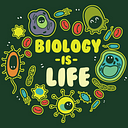The impact of eBirding on science and conservation of the environment
Birding has had a meaningful impact on various scientific societies because it has allowed ornithologists and other scientists to understand the behaviors of different species of birds.
Steven Rindner, a bio student based in New York, recalls a story of how the hobby or activity had been difficult to do before technology has progressed to how it is today.
Back in 1992, two Danish birders reported the first-ever sighting of a cinnamon hummingbird in the U.S. They had to use a payphone to try to get the word out. Another birder from Nebraska got wind of the report and took photos of the species. It took days before the pictures got sent to the Arizona committee that led the process of validating unusual sightings. When the sighting was confirmed, and news of it spread out to Arizona, it had already been too late, and the hummingbird had already gone.
With the emergence of eBirding, such a story has rarely happened anymore because of how quick reporting and validation are done thanks to technology.
Not only has eBirding helped hobbyists or bird watchers, but the data gathered from it has also provided scientists with more powerful data to track the movements of the birds. Bio student Steven Rindner notes that scientists who have access to eBirding data have been able to create visualizations of the pathways of migratory birds, determine important habitats for conservation, and understand the movement of invasive species.
The rapid transmission of data brought about by eBirding has helped fill the gaps in research on the thousands of bird species across the world. Understanding bird populations at much larger scales has become possible, further strengthening conservation actions, particularly rare or threatened bird species. And for Steven Rindner and other bio enthusiasts, this is certainly good news.
